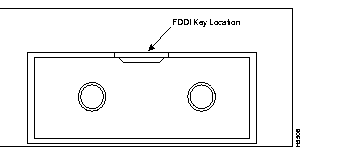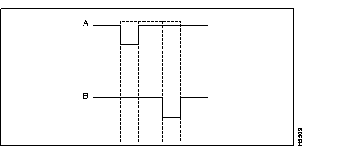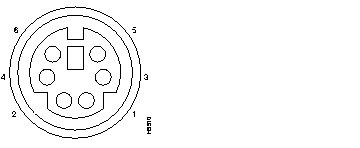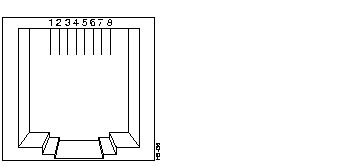|
|

This appendix describes the connectors for the following types of Catalyst 2800 modules:
This section describes the following:
The UTP SAS module uses standard RJ-45 connectors. The arrangement of the pins is shown in Figure B-1. Note that connector shells are attached to chassis ground. Stations are always attached with a cross-over cable.

The FDDI module uses standard MIC connectors, as shown in Figure B-2.

The receptacle keys for ports A and B of the FastMate Fiber DAS module are shown in a simplified form in Figure B-3.

The Fiber DAS module uses a 6-pin mini-DIN connector for the optical bypass switch. The pin arrangement is shown in Figure B-4.

This section describes the two connectors for the Catalyst 2800 Fast Ethernet modules:
The 100Base-TX modules use standard RJ-45 connectors. The arrangement of the pins is shown in Figure B-5, and the pinouts are shown in Table B-1.

| Pin | |
|---|---|
| 1 | RD+ |
| 2 | RD- |
| 3 | TD+ |
| 4 | NC |
| 5 | NC |
| 6 | TD- |
| 7 | NC |
| 8 | NC |
Connector shells are attached to chassis ground. The 100Base-TX ports have their transmit (TD) and receive (RD) pairs internally crossed (designated by the x) for attachment to an adapter using a straight-through cable.
The straight-through and crossover cable schematics are shown in Figure B-6 and Figure B-7.


The 100Base-FX modules use standard ST connectors. The arrangement of the pins is shown in Figure B-8.

|
|